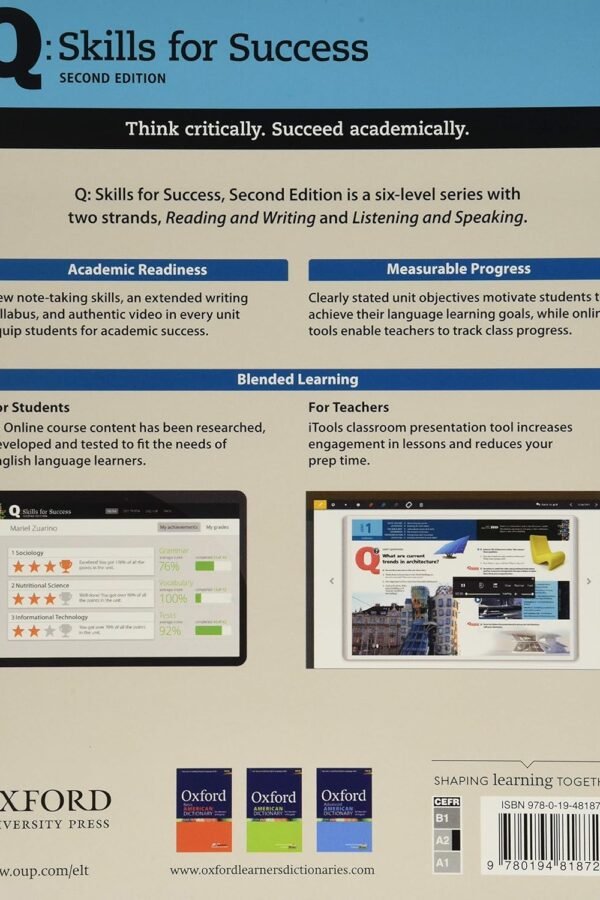Looking to expand your brand’s reach and connect with new leads? Marketing sponsorships are the solution you’ve been waiting for. By promoting events or organizations led by others through financial contributions or advertising, marketing sponsorships allow businesses to tap into new audiences and increase brand awareness. Whether it’s sponsoring trade shows, charities, community events, or even virtual gatherings, the possibilities are endless. Not only do sponsorships help shape consumer behavior and differentiate your brand from competitors, but they also have the potential to improve your public image and boost sales. From media sponsorships to in-kind donations, there are various types of sponsorships to explore. So why wait? With the right sponsorships in your marketing plan, you can transform your brand’s presence and achieve remarkable results.

Benefits of Marketing Sponsorships
Marketing sponsorships offer numerous benefits for businesses. By partnering with events or organizations, companies can greatly increase brand awareness among a wider audience. This exposure helps to promote their products or services and attract new customers. Additionally, participating in sponsorship activities can enhance a company’s public image, showcasing its commitment to supporting the community and its values.
Sponsorships also have the power to shape consumer behavior. When a brand aligns itself with a particular event or cause, it can influence consumers’ perceptions and attitudes towards the company. This can lead to increased trust and loyalty, ultimately driving sales. Moreover, through sponsorships, businesses can differentiate themselves from their competitors by showcasing their unique values and the positive impact they have on society.
Different Types of Marketing Sponsorships
There are three main types of marketing sponsorships: media sponsorship, financial sponsorship, and in-kind sponsorship.
Media sponsorship involves partnering with media outlets such as television stations, radio stations, or online platforms to promote an event or organization. In exchange for their support, businesses receive advertising space or airtime to promote their brand.
Financial sponsorship, as the name suggests, involves providing financial support to an event or organization in exchange for brand exposure. This can include sponsoring a keynote speaker, providing funds for event production, or offering scholarships to attendees.
In-kind sponsorship refers to donating products or services instead of providing financial support. This could include offering free goods for event attendees, providing equipment or materials, or supplying a venue for an event.

Examples of Marketing Sponsorship Ideas
There are countless creative ways for businesses to incorporate marketing sponsorships into their strategies. Some popular examples include:
-
Sponsoring industry events: By sponsoring events relevant to their target market, businesses can boost brand visibility and establish themselves as industry leaders.
-
Providing a photo station: Setting up a photo station at an event where attendees can take pictures with branded props can generate social media buzz and spread brand awareness.
-
Sponsoring sports teams: Partnering with local sports teams or athletes can attract a passionate fan base and associate the brand with the excitement and values of the sport.
-
Providing in-kind donations for a raffle: Donating products or services for a charity raffle not only helps the community but also allows the business to showcase their offerings to potential customers.
-
Hosting a charging station: Offering a charging station at an event allows attendees to charge their electronic devices while exposing them to the brand’s logo and messaging.
-
Offering branded gifts: Providing attendees with branded gifts, such as pens or tote bags, helps increase brand visibility and serves as a reminder of the event or organization.
-
Setting up activity stations: Creating interactive activity stations at events engages attendees and allows businesses to showcase their products or services in a fun and memorable way.
-
Paying for Wi-Fi: Sponsoring the Wi-Fi at an event ensures that attendees have a seamless online experience while also prominently displaying the brand’s name.
-
Matching donations: Encouraging employees and customers to donate to a cause by matching their contributions not only shows corporate social responsibility but also creates a sense of community.
-
Planning branded transitions: Incorporating branded transitions, such as logo animations or sound effects, during event presentations or speaker introductions adds a professional touch and reinforces the brand’s presence.
How to Add Sponsorships to a Marketing Plan
To successfully integrate sponsorships into a marketing plan, businesses should follow these steps:
-
Identify sponsorship goals: Determine the objectives the company wants to achieve through sponsorships, such as increasing brand visibility, attracting new customers, or supporting a specific cause.
-
Research the target market: Understand the demographics, interests, and preferences of the target audience to identify events or organizations that align with their interests.
-
Review the budget: Assess the available budget to allocate funds for sponsorships appropriately. Consider the potential return on investment and the value the sponsorship can bring to the company.
-
Network to find opportunities: Engage with relevant industry networks, associations, or community groups to identify potential sponsorship opportunities and make meaningful connections.
-
Research specific sponsorship opportunities: Research and evaluate different events or organizations to ensure they align with the company’s goals, values, and target audience.
-
Write a sponsorship proposal: Create a compelling proposal that outlines the benefits of the sponsorship, how it aligns with the company’s objectives, and the marketing assets that will be provided in return.
-
Sponsor the event: Once the sponsorship agreement is finalized, provide the agreed-upon support and actively participate in the event or organization.
-
Evaluate the results: Measure the impact of the sponsorship by tracking brand exposure, analyzing customer engagement, and assessing return on investment. Use the findings to refine future sponsorship strategies.

Defining Marketing Sponsorships
Marketing sponsorships involve one business supporting an event or organization led by another through financial contributions or advertising. It is a collaboration that benefits both parties by increasing brand reach and connecting with new leads.
Marketing teams play a crucial role in managing sponsorships. They are responsible for identifying and evaluating sponsorship opportunities that align with the company’s goals and target audience. They also negotiate agreements, create sponsorship proposals, and oversee the implementation and evaluation of sponsorships. Furthermore, marketing teams coordinate the marketing assets provided to ensure optimal brand visibility and engagement.
Events and Organizations to Sponsor
Businesses have a wide range of events and organizations to choose from when seeking sponsorship opportunities. Some examples include:
-
Charities: Sponsoring charitable organizations allows businesses to support a cause while increasing brand visibility and demonstrating corporate social responsibility.
-
Trade shows: Sponsoring trade shows provides companies with the opportunity to showcase their products or services to a targeted audience of industry professionals and potential customers.
-
Community events: Supporting local community events, such as festivals or fundraisers, helps businesses establish a positive reputation and deepen their connection with the local community.
-
Virtual events: In the era of remote work and online engagement, sponsoring virtual events allows businesses to reach a global audience and showcase their expertise in a specific industry or field.
By carefully selecting events and organizations that align with the company’s values and target audience, businesses can maximize the benefits of marketing sponsorships.
Media Sponsorship
Media sponsorships involve partnering with media outlets to promote an event or organization. This collaboration provides businesses with access to a broader audience, as media outlets have established platforms and reach. In exchange for their support, companies receive advertising space or airtime to showcase their brand and messaging.
Media sponsorships offer several benefits, including increased brand exposure, credibility, and a wider reach. Being associated with well-known media outlets enhances a company’s reputation and can lead to increased trust among consumers. Additionally, media outlets often have segmented audiences, allowing businesses to target specific demographics effectively.
Examples of media sponsorships include sponsoring a segment on a popular radio show, having brand logos displayed during a televised event, or partnering with an influential online publication.
Financial Sponsorship
Financial sponsorships involve providing monetary support to an event or organization in exchange for brand exposure. Businesses can contribute funds in various ways, such as sponsoring a particular aspect of the event, supporting scholarships, or contributing to the overall production costs. In return, they benefit from increased brand visibility and the positive association with the sponsored event.
Financial sponsorships offer several advantages. By aligning their brand with a well-regarded event or organization, companies can elevate their reputation and reach a broader audience. Moreover, financial sponsorships can create positive brand associations, as consumers often appreciate companies that invest in community initiatives or relevant causes.
Examples of financial sponsorships include sponsoring a music festival, supporting a TED talk event, or contributing funds to a charity gala.
In-kind Sponsorship
In-kind sponsorships involve providing products or services instead of monetary support. By donating goods or services, businesses can help fulfill the needs of an event or organization while gaining brand exposure. This type of sponsorship allows companies to showcase their offerings directly to the target audience.
In-kind sponsorships offer unique benefits. Businesses can demonstrate the quality of their products or services in a tangible way, effectively engaging potential customers. This form of sponsorship also allows companies to build relationships with event organizers and establish a positive brand image rooted in generosity and support.
Examples of in-kind sponsorships include providing food and beverages for an event, supplying merchandise for a conference, or offering equipment or signage for a trade show.
Benefits of Sponsorship Evaluation
Evaluating sponsorships is crucial to understanding the impact and success of these marketing initiatives. By performing effective evaluation, businesses can make data-driven decisions and refine their sponsorship strategies. Here are some key benefits of sponsorship evaluation:
-
Tracking brand exposure: Monitoring brand visibility during sponsored events or campaigns provides insights into the reach and impact of sponsorships. Data on logo placement, social media mentions, or audience interaction helps assess the effectiveness of brand exposure.
-
Measuring customer engagement: Evaluating the level of customer engagement resulting from sponsorships allows businesses to understand the effectiveness of their marketing efforts. Analyzing metrics such as website traffic, social media interactions, or survey responses helps gauge customer interest and sentiment.
-
Assessing return on investment: By analyzing the financial outcomes of sponsorships, companies can determine the return on investment and evaluate the cost-effectiveness of their marketing efforts. This evaluation involves comparing the financial benefits, such as increased sales or customer acquisition, against the expenses incurred.
-
Identifying areas for improvement: Sponsorship evaluation provides valuable insights into areas that can be improved or optimized. By understanding what works and what doesn’t, businesses can refine their strategies, adjust their approach, and ensure future sponsorships align with their goals and target audience.
Overall, assessing the results of sponsorships helps companies make informed decisions, optimize their marketing efforts, and maximize the benefits of these valuable partnerships.













